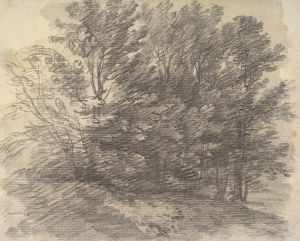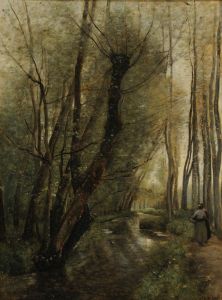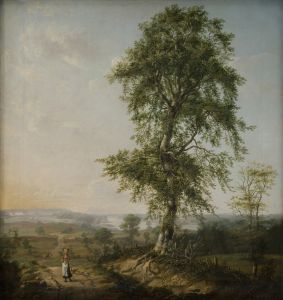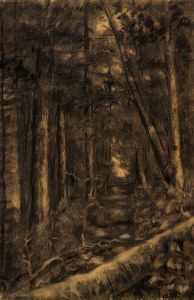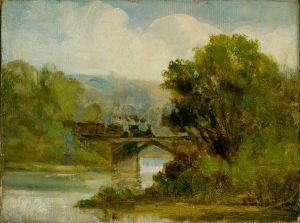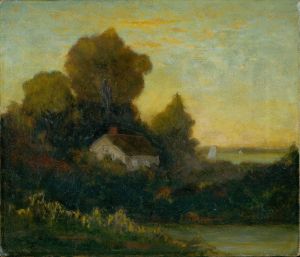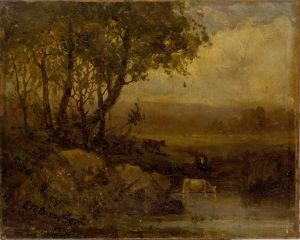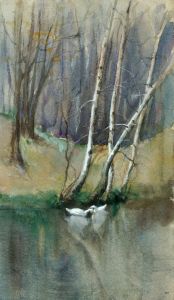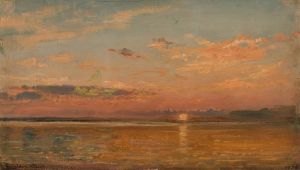
Untitled
A hand-painted replica of Edward Mitchell Bannister’s masterpiece Untitled, meticulously crafted by professional artists to capture the true essence of the original. Each piece is created with museum-quality canvas and rare mineral pigments, carefully painted by experienced artists with delicate brushstrokes and rich, layered colors to perfectly recreate the texture of the original artwork. Unlike machine-printed reproductions, this hand-painted version brings the painting to life, infused with the artist’s emotions and skill in every stroke. Whether for personal collection or home decoration, it instantly elevates the artistic atmosphere of any space.
Edward Mitchell Bannister (1828-1901) was a prominent African American artist known for his contributions to the American art scene in the 19th century. His painting "Untitled" is one of his many works that showcases his talent and dedication to the arts. Bannister was born in St. Andrews, New Brunswick, Canada, and later moved to the United States, where he became an influential figure in the art community.
Bannister's work is often associated with the Barbizon school, a movement that emphasized naturalism and the depiction of rural scenes. His paintings frequently feature landscapes, seascapes, and pastoral scenes, reflecting his deep appreciation for nature. "Untitled" is no exception, capturing the serene beauty of the natural world with a keen eye for detail and a masterful use of light and shadow.
The painting "Untitled" is characterized by its soft, muted color palette and delicate brushwork, which create a sense of tranquility and harmony. Bannister's technique involves layering thin glazes of paint to build up depth and luminosity, a method that was influenced by his study of European masters. This approach allows him to achieve a remarkable level of realism while maintaining a sense of atmospheric perspective.
In "Untitled," Bannister's composition is carefully balanced, with a focus on the interplay between light and shadow. The scene is likely set in a rural landscape, featuring elements such as trees, fields, and possibly a body of water. The artist's attention to detail is evident in the way he renders the textures of the foliage and the play of light on the water's surface. This meticulous approach not only enhances the realism of the scene but also imbues it with a sense of calm and stillness.
Bannister's work was well-received during his lifetime, and he achieved significant recognition for his contributions to the art world. In 1876, he won a bronze medal at the Philadelphia Centennial Exposition for his painting "Under the Oaks," a testament to his skill and the high regard in which he was held by his contemporaries. Despite the racial barriers of the time, Bannister's talent and perseverance allowed him to carve out a successful career as an artist.
Today, Edward Mitchell Bannister is celebrated as a pioneering African American artist who made significant contributions to American art. His works, including "Untitled," continue to be admired for their beauty, technical proficiency, and the unique perspective they offer on the natural world. Bannister's legacy endures, inspiring future generations of artists and art enthusiasts alike.
While specific details about the painting "Untitled" may be limited, its existence within Bannister's body of work highlights his consistent dedication to capturing the essence of the natural landscape. His ability to convey the subtleties of light and atmosphere remains a defining characteristic of his art, making "Untitled" a valuable piece in understanding his overall artistic vision.





